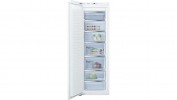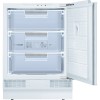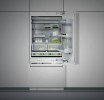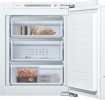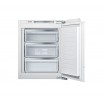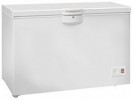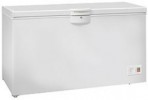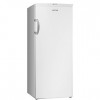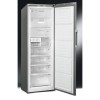freezers
The freezer is an appliance that allows food to be stored for an extended period of time, thanks to the extremely low temperature that far exceeds that of a conventional refrigerator. And if one is normally content with the classic freezer compartment integrated in the same refrigerators, those who have more space in their homes can resort to the use of a separate appliance, designed to store frozen food, so that they can easily stock up on it when the need arises.
There are many freezers available on the market, which differ not only in price, but also and above all in type, size, equipment and performance. Here are all the factors that need to be taken into consideration in view of a purchase, in order to select an efficient device that easily responds to what may be your individual needs.
Frozen food
Table of Contents Show
How a freezer works and what it is used for
A freezer, commonly referred to as a freezer, is nothing more than a household appliance which, as its name suggests, allows food to be frozen and stored at low temperatures, and for a particularly long period of time. This freezing process offers the advantage of being able to preserve more easily all the organoleptic properties of food, which, precisely through freezing, do not see their typical characteristics affected in any way, which otherwise tend to degrade rather quickly.
How the freezing process works
All food contains water, the same water that tends to solidify at low temperatures, preserving it much longer than in an ordinary refrigerator: this happens because the cold stops the enzymatic reactions in food that could actually spoil it. However, even frozen food has a 'shelf life' within which it should be consumed: this is because the protection afforded by freezing tends to decay over time. In fact, many freezers, in order to overcome this problem, have a series of labels indicating the average shelf life of all those foods that are normally consumed more frequently, precisely to avoid their consumption if they inevitably deteriorate.
Types of freezers
Various types of freezers are available on the market and it can therefore be difficult to orientate the choice towards one or the other model: in fact, it is a question of evaluating purely subjective or practical factors, which can have a significant influence: from daily habits to available space, here is what to evaluate and which models to take into consideration, depending on one's needs.
Chest freezer
Chest freezers are among the most popular, as they offer an excellent 'loading capacity' at a generally lower price than canonical upright models. Consisting of a rectangular structure and a single internal compartment, with an opening at the top, they place the same temperature in each part of the structure, which can be filled adequately using approximately ¾ of the available space.
The main advantage of chest freezers is their large capacity and the fact that the appliance can be opened by means of a hatch that disperses the cold relatively well, precisely because it first tends to remove the warm air present in the upper layers. However, it can have the disadvantage of requiring the perfect order of the food, which must always be arranged critically to facilitate selection at the time of use. On the other hand, however, it is good to remember that having one large compartment allows you to store even bulky food that would otherwise have to be portioned, taking care to always rotate it periodically so that the most recently introduced food is always placed in the lower part of the compartment.
Chest freezer
Upright or drawer freezer
Upright freezers or chest freezers, seen from the outside, look very much like ordinary refrigerators: they differ from them in that inside they have a series of drawer compartments that facilitate the perfect order of food. In them, the propagation of cold occurs not only from the walls but also from a series of coils underneath the drawers, which ensure that it is evenly distributed. The very presence of the drawers, if in fact it imposes a series of limits on the size of the food, nevertheless offers the advantage of being able to easily manage each one of them, without wasting too much time searching for the desired food.
The presence of multiple compartments offers the possibility of dedicating a specific drawer to each foodstuff, for greater order and practicality. Similarly, an arrangement developed in height, makes access more convenient without the need for long stoops as is the case with chest freezers, thus reducing the freezing capacity due to the heat losses that inevitably occur each time the door is opened.
However, the only disadvantage of the upright freezer is its higher energy consumption: this occurs because the front opening allows more hot air to enter the device. The objective size of the drawers also significantly reduces the freezer's loading capacity.
Small freezer
Lack of space is among the most frequent problems that can be found in today's homes. problems that can be found in today's homes. This is certainly among the most frequently cited reasons for choosing a small freezer or 'mini freezer'. This is an upright device with drawers that, thanks to its small size, can easily be placed under kitchen countertops, further reducing clutter.
This type of appliance is normally used extensively in offices or at holiday resorts where a proper freezer would be excessive, but there is still the need to be able to enjoy properly frozen food as required.
Combined fridge freezer
Finally, among the different types of freezers, there are the so-called fridge-freezers, which are also the most widespread models: these are combined appliances that combine a refrigerator and freezer in a single appliance, in this case placed in the upper part and considerably smaller in size than the cooling compartment. Such appliances save space and energy, although the amount of frozen food that can be stored inside is very small, except for the American side-by-side models that have a double door.
Upright freezers
Cooling system
Freezers are therefore necessary if you want to preserve food for a long time, keeping it unaltered thanks to the extremely low temperatures: for this purpose, different cooling technologies can be used, which have their own characteristics to be evaluated according to requirements.
Static cooling
The static cooling system is the most traditional: commonly used in refrigerators, it produces a natural cooling that spreads over time with the disadvantage, however, of causing frost and ice to form on the walls. This disadvantage, however, leads to the formation of frost and ice on the walls. This inconvenience therefore entails the need to periodically maintain the device, removing these residues that would otherwise compromise its correct functioning.
Freestop frost cooling
Freestop frost cooling represents a rather recent technology introduced by some leading manufacturers: it combines the classic static system with a valve designed to expel air and condensation, allowing the formation of frost to be significantly reduced and requiring periodic defrosting which is extremely sporadic, approximately every 5 years.
No-frost cooling
In the so-called no frost models of freezers, just as in refrigerators, the air is treated thanks to the presence of forced ventilation, capable of treating the humidity: this allows the cold to be dry, avoiding the formation of frost and ice and representing a considerable advantage in terms of maintenance and cleaning.
Electronic freezers
There are also so-called electronic freezers, i.e. those equipped with electronic functions designed to optimise their performance, helping to make them perform better than traditional freezers.
These devices make it possible to eliminate all possible temperature changes that could compromise food preservation, thanks to the presence of a thermal sensor capable of assessing not only the external temperature but also the quantity of food present inside the freezer, and which allows all possible temperature variations to be automatically detected and corrected. Checking the temperature set in the freezer is possible thanks to the presence of a display, not to mention that the internal device, allows you to detect any power fluctuations, while still preserving the food placed inside according to a certain autonomy without compromising its quality, all while keeping the internal temperature constant. Upright freezer
How to choose the ideal freezer
The market is able to offer a wide choice of freezers, easily satisfying all kinds of needs: it is important to understand what one's needs are and choose which model to buy according to them. It is important to understand what your needs are and choose which model to buy according to them. For this, you should first consider the space available and the amount of food you need to store inside the appliance: these factors will therefore lead you to choose a chest freezer rather than an upright or fridge-freezer.
If one is used to freeze large quantities of food, often bulky, the chest freezer is the most suitable choice, thanks to the considerable loading capacity given by the typical structure. The upright model, on the other hand, is more suitable if the available space is limited and the need arises to fit the appliance in the kitchen, or otherwise if the quantity of food to be frozen is normally not large.
The purchase of a fridge-freezer alone, whose capacity is rather small, is mainly suitable for those who have little space in the kitchen and cannot afford the space required for an additional appliance, or for those who do not usually use frozen food but still want a minimum of space when the occasion arises. It is also important to keep in mind the so-called stars, which indicate below which temperatures the appliance can drop. It is also necessary to consider the thickness of the walls when buying a freezer, since a greater thickness will promote the ability to keep temperatures low, thus preserving food better and saving energy. It would also be advisable to select a model equipped with a rapid freezing device, possibly no frost, which can reduce maintenance while being slightly more expensive than conventional models. Last but not least, the noise level should not be underestimated because if the freezer is installed in a domestic environment, the noise caused by the motor and compressor included inside could cause quite a bit of discomfort. Chest freezers
Correct use of the freezer
For correct use of the freezer, so that the device works properly and lasts a long time, it is necessary to observe a few small precautions that can optimise the storage of food effectively. Whether it is cooked food, rather than raw food, it is necessary to place it in the freezer only when cooled to avoid temperature changes. It is also better not to overfill the freezer, always respecting its technical capacity and taking into account the relative freezing capacity over 24 hours, which is normally around 5/6 kg per 100 litres of volume.If the chosen model is a traditional type of freezer, it is necessary to empty it periodically, so as to carry out cleaning as well as defrosting, about twice a year. The freezer should then be placed in the coolest place in the kitchen, as far as possible from any heat sources that could compromise its operation, and taking care to maintain at least 10 cm distance from load-bearing walls.
In the case of vertical models, attention must also be paid to the floor on which the device is placed: it should always be perfectly flat to prevent the freezer door from closing badly, compromising food preservation.
A good habit is to clean, at least once a year, the freezer condenser located at the back and useful for dispersing the heat produced: this operation allows the appliance to be preserved in the best possible way, guaranteeing greater durability and efficiency. In conclusion, it is important to always follow what is written in the user manual supplied by the manufacturer and compulsory: inside it, in addition to the technical characteristics of the freezer, there are all the necessary precautions to guarantee its constant and correct operation.
















 domestic blast chiller
domestic blast chiller
 Steam oven
Steam oven

 Home Connect Let your creativity shine with connected appliances
Home Connect Let your creativity shine with connected appliances
 Elica
Elica



 Sub-Zero and Wolf
Sub-Zero and Wolf
 SMEG Design, performance and attention to detail
SMEG Design, performance and attention to detail


 Neff distinguishes itself through exclusive design and countless functions
Neff distinguishes itself through exclusive design and countless functions
 Siemens
Siemens

 Liebherr
Liebherr

 KITCHENAID BLAST CHILLER
KITCHENAID BLAST CHILLER

 Irinox
Irinox


